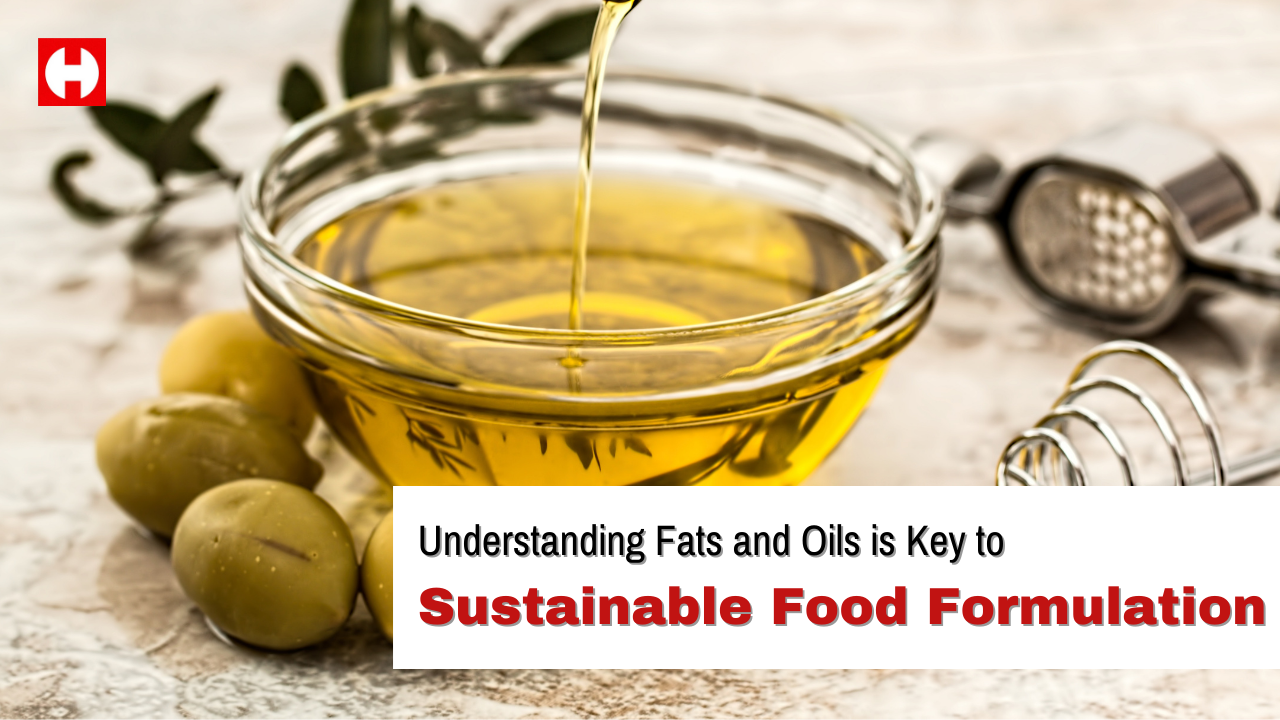
Understanding Fats and Oils is Key to Sustainable Food Formulations
Oils are a slippery slope to navigate for all food researchers. There’s a lot of rhetoric surrounding the fact that oils are linked to high cholesterol, putting people at risk for diabetes or cardiovascular diseases. Despite its association with multiple health risks, oils and fats are known to be an essential carriers of fat-soluble vitamins or micronutrients, and even more important, as an energy store crucial to survival in colder climates.?
Aside from the macro aspect of healthy fat and oils that play a part, the most concerning roles for fats and oils in a food technologist’s playbook are their effects on tastes, flavours, mouthfeel, heating properties and aesthetics!
Here are some paths of oil information that may help you chart your choice of fats and oils in your next product formulation!
Path # 1.? Know Your Fatty Acid Types
Figure 1. Fatty Acid Composition of Vegetable Oils
Fats and oils are composed of mixtures of triglycerides. These structures contain fatty acid parts with varying number of carbon chains.? These chains are responsible for the differences that contribute to a product’s physical and performance characteristics.? Based on the type of fatty acid chains in the triglycerides, the fats and oils can be categorized into: monounsaturated fats, polyunsaturated fats, trans fats, and saturated fats.?
Good fats include monounsaturated fats and polyunsaturated fats. Examples are oils with higher components of oleic acid (C18’), linoleic (C18”) and alpha-linoleic (C18”) fatty acids. From the above chart, we can see that a wide range of oils from safflower oil, soy bean oil, sunflower oil and palm oil contains such high proportions of unsaturated fatty acids.? Including these oils into the daily diet are thought to be able to lower LDL cholesterol which is harmful to the body.?
Conversely, trans fats and saturated fats consisting of oils of higher proportion of straight carbon chains of fatty acids like lauric, myristic, palmtic and stearic increase LDL levels, and need to be taken in moderation.
With respect to the mixture of fatty acid types, most oils do have a balanced mix of saturated and unsaturated fatty acids in their compositions.?
Knowing their fatty acid compositions are essential to choosing the right type of emulsifier for stabilizing your product’s oil and water contents.
Path #2.? How Stable Is Your Oil to Temperature Variations?
As fats and oils are composed of a mixture of triglycerides, knowing their melting points may not be as relevant as knowing their solid fat indexes. This is because for some oils, even when heated above their melting point, they may still exist in the solid state depending on their fatty acid compositions. For those interested in the relationship between melting point and its chemical moiety, the melting point increases with fatty acid chain length and decreases with increased unsaturation.?
Understanding crystallization and polymorphism in fats and oils??
Different kinds of oils can exist in different crystalline forms. Solids with the same composition that can exist in more than one crystalline form are called polymorphs.?
In Figure 2, the different crystal forms determine the sub-cell structure and consequently their melting point and energy potential which ultimately decides their stability under different conditions.
Oils for margarine or shortening have β’-crystals to give the desired spreading textures and mouthfeel whilst fats in chocolates need to be tempered to produce β crystals to give them their hard, shiny textures.
Figure 2. Crystallization & Polymorphism of Fats
Some studies show a preference for extra virgin olive oil and coconut oil for being the most stable because of their high smoke points and thus the better choice as a deep frying oil.?
Path #3.? What Flavour Does It Add To Your Product?
Vegetable oils are a popular choice to bake with because it doesn’t add its own distinct flavor to the dish. Oils with higher smoke points can leave a bitter aftertaste when cooking with a high heat. Oils with high smoke points will tolerate the higher temperatures of deep frying and not break down to release toxic fumes. Some oils with high smoke points include avocado, peanut, canola, sunflower, and sesame oil which can be close to 200°C. Oils with lower smoke points can include flaxseed, pumpkin seed and walnut, which might be better used for items such as salad dressing.?
If your company specializes in frozen fried products like spring rolls, breaded chicken nuggets or fish fingers, then the choice of oil should be one with high smoke points.
Some oils like coconut oil, has its own distinctive flavour that can either enhance or twist the flavour of the formula. Factors like the amount of oil used may also cause changes in textures and flavours of the end product.
Think You Chose the Right Oils and Yet Struggle with Achieving Your Ideal Taste Profiles?
As stated right at the beginning of the article, oils and fats is a complex part of any food formulation. That is why solutions in targeted emulsifiers arise to bridge the gap in textural, quality and stability issues common with any product containing oils.
At the chemical level, high quality emulsifiers control the physical properties of fats and oils to stabilize the desired solid fat index, melting point, crystallization and polymorphism of the chosen oils and fats such that the food technologist can have a more predictable outcome across different batches.?
At the finalized product level, use of targeted sugar fatty acid esters improve the rheological functions, stability and mouthfeel to make the product as consistent as possible.
In conclusion, whether you are designing the next flavorful chocolate compound, or frozen fried meat patties, understanding the nature of fats and oils with some chemistry basics in mind will pave the way to a sustainable long-term shelf product.
If not, just drop our emulsifier experts a message here.